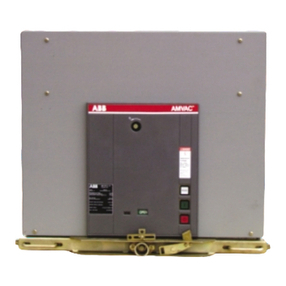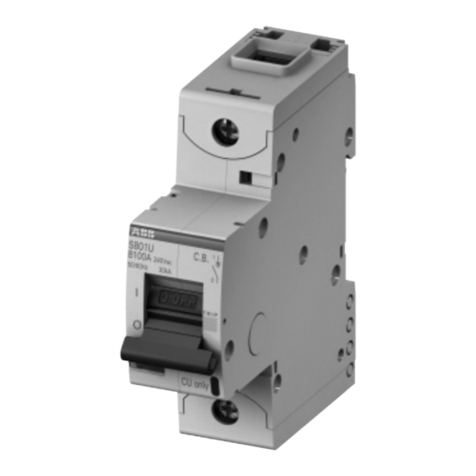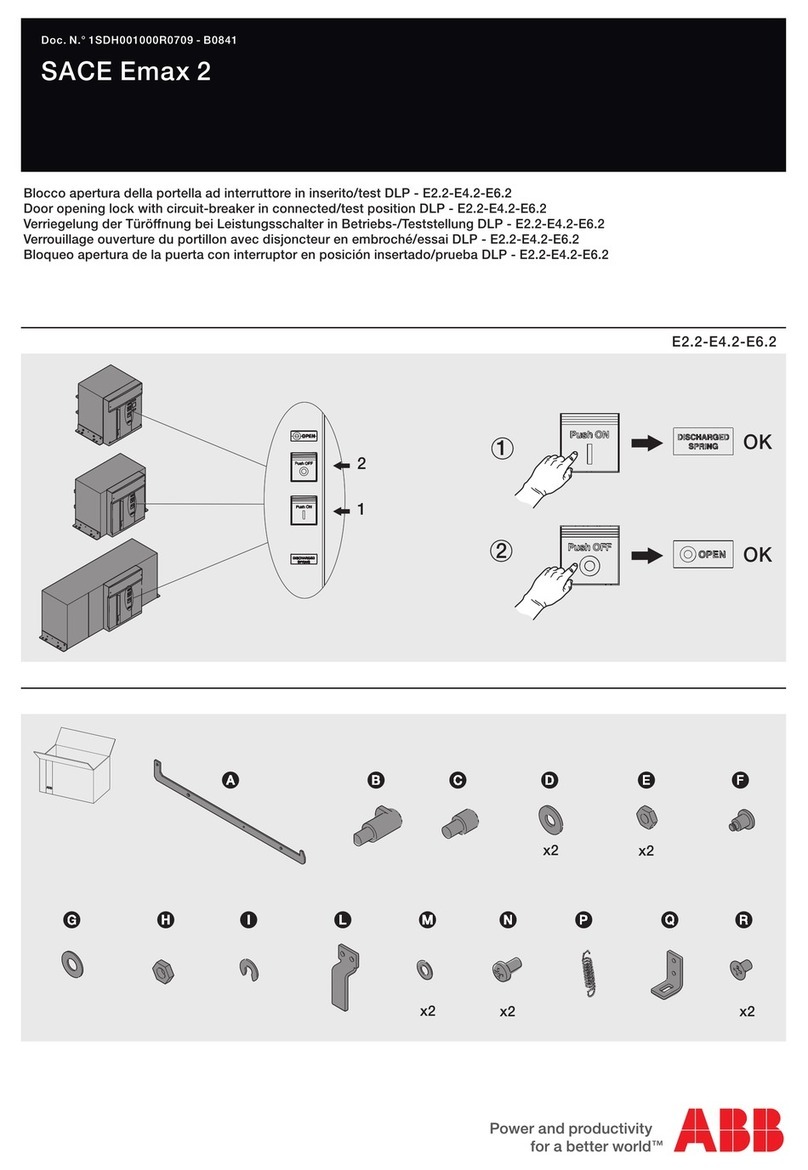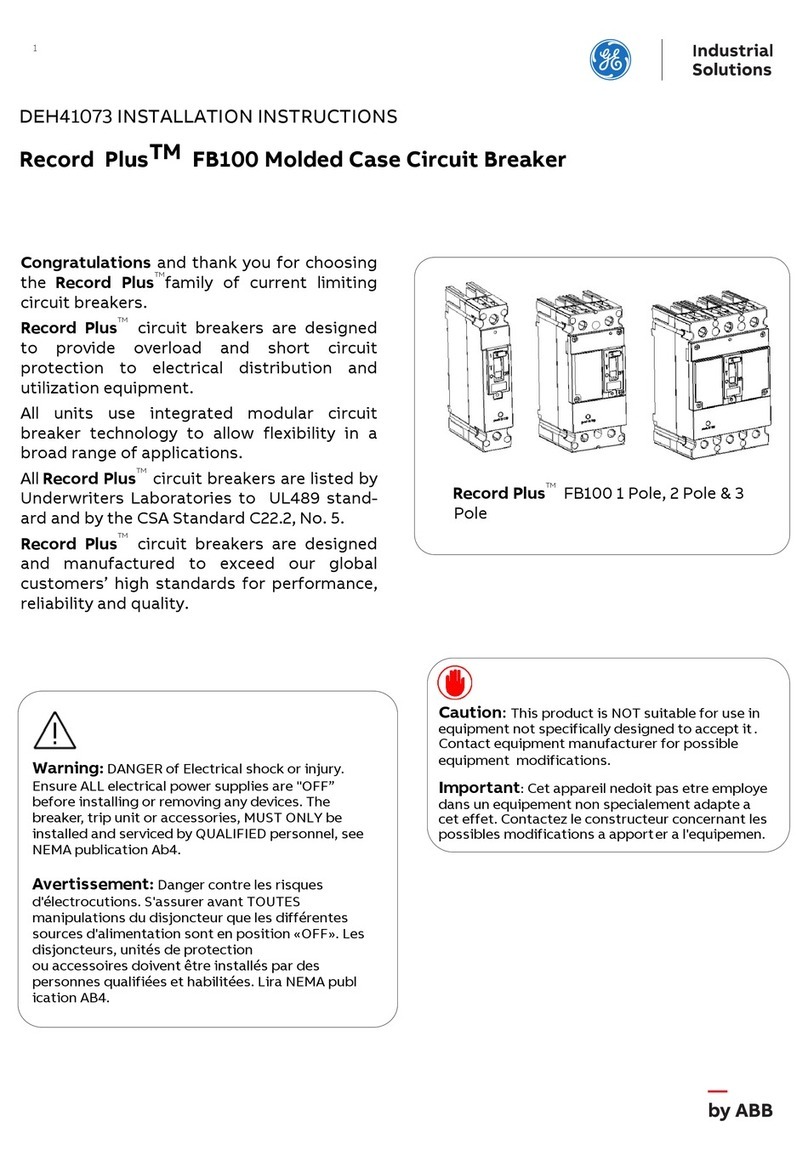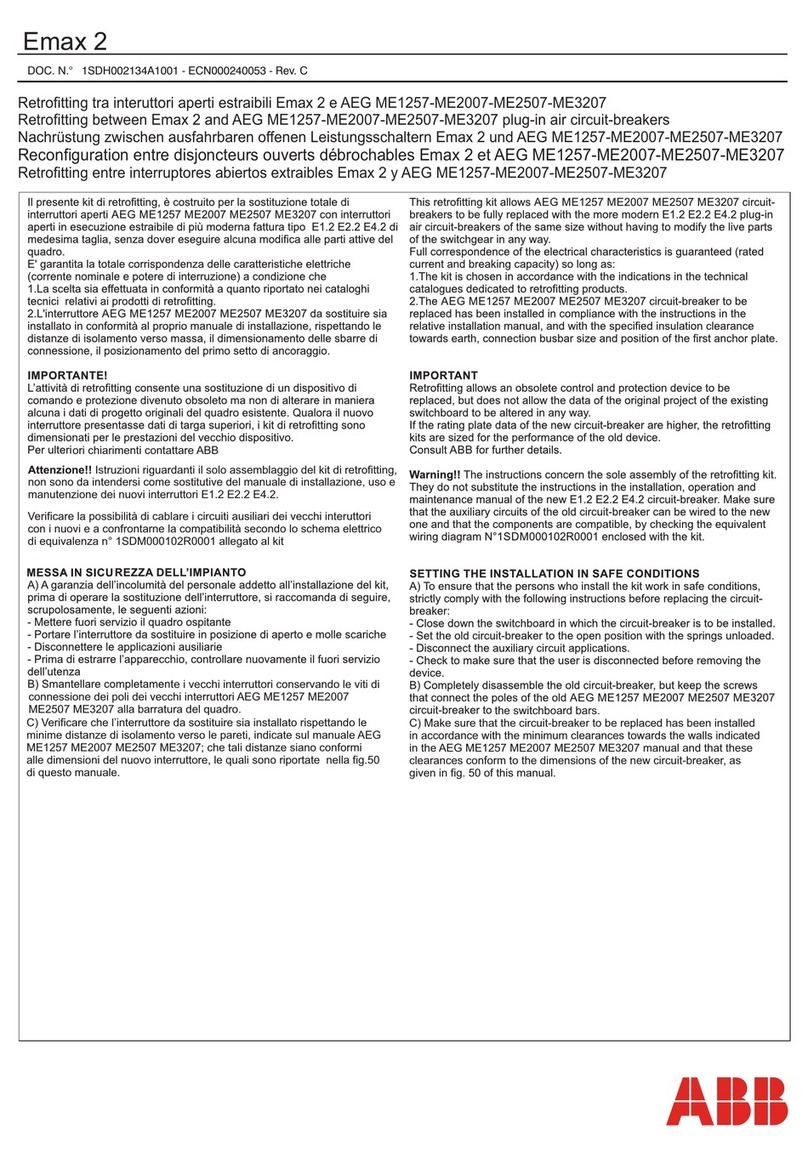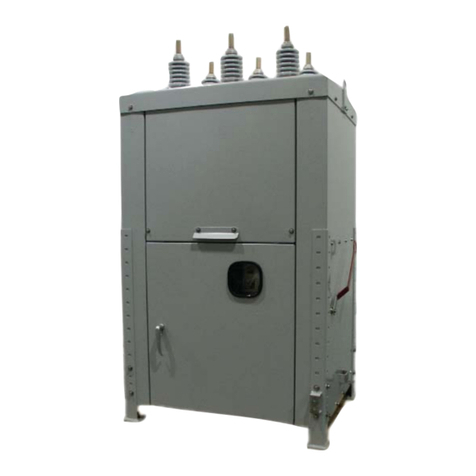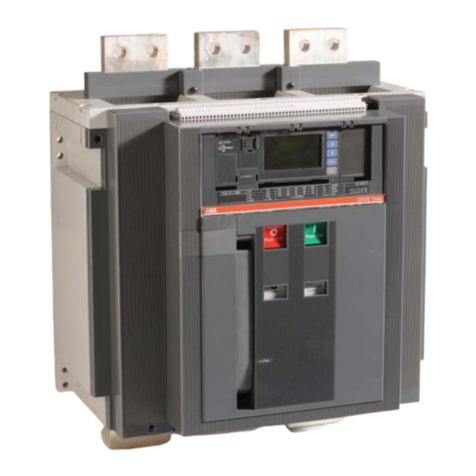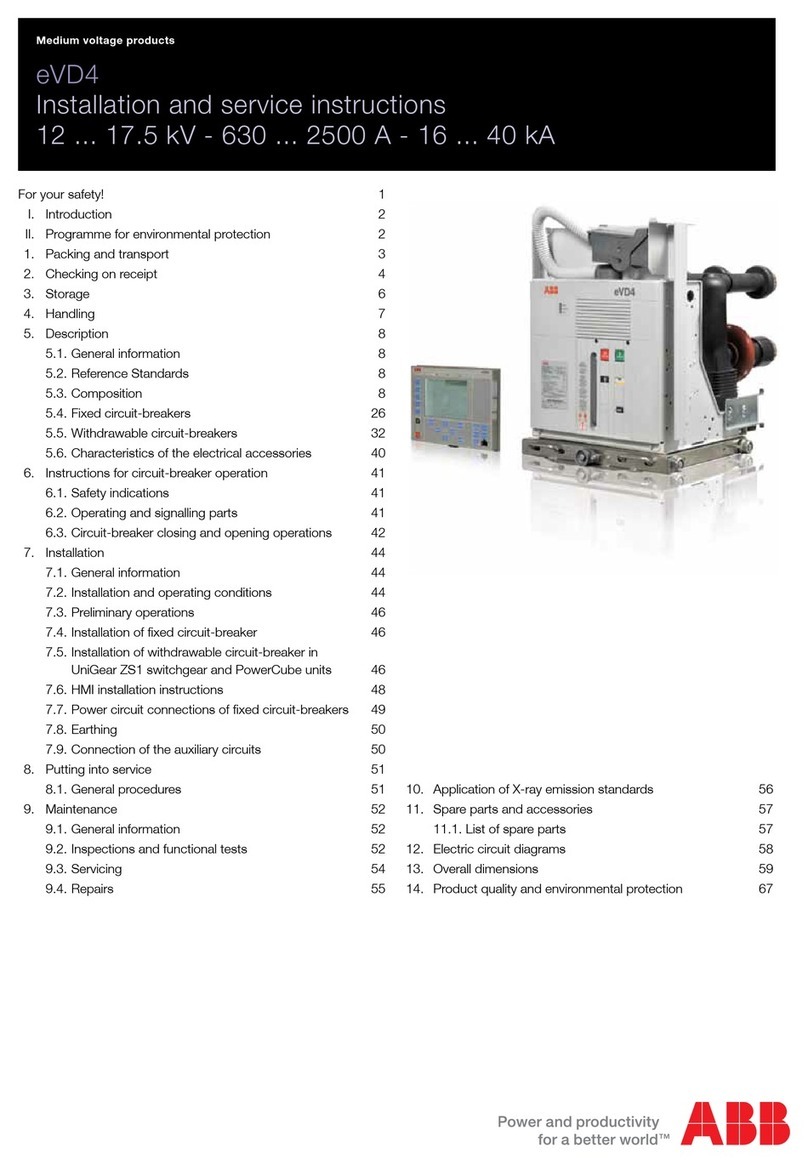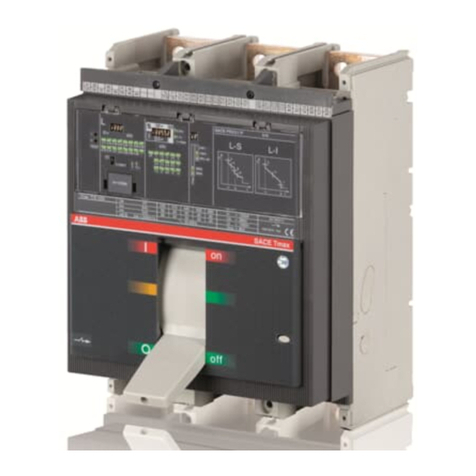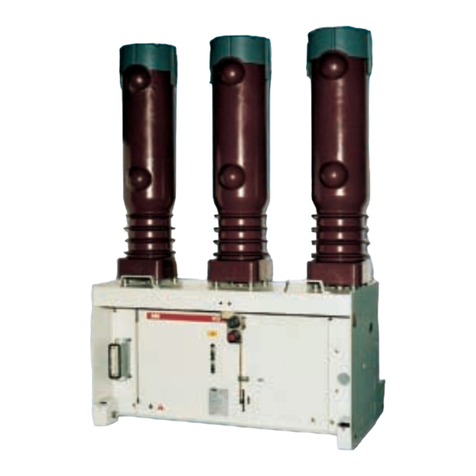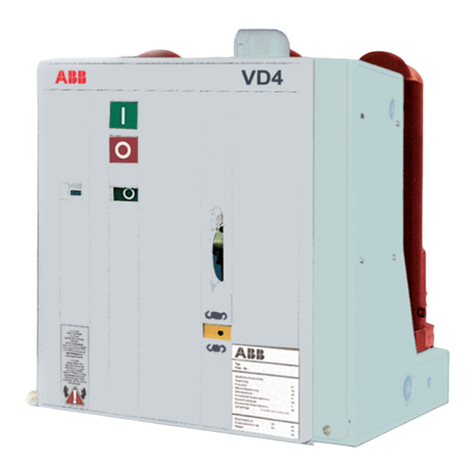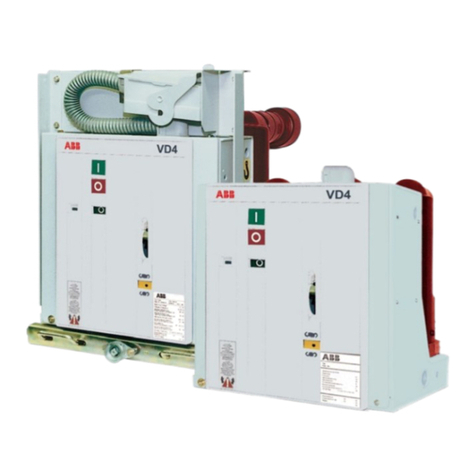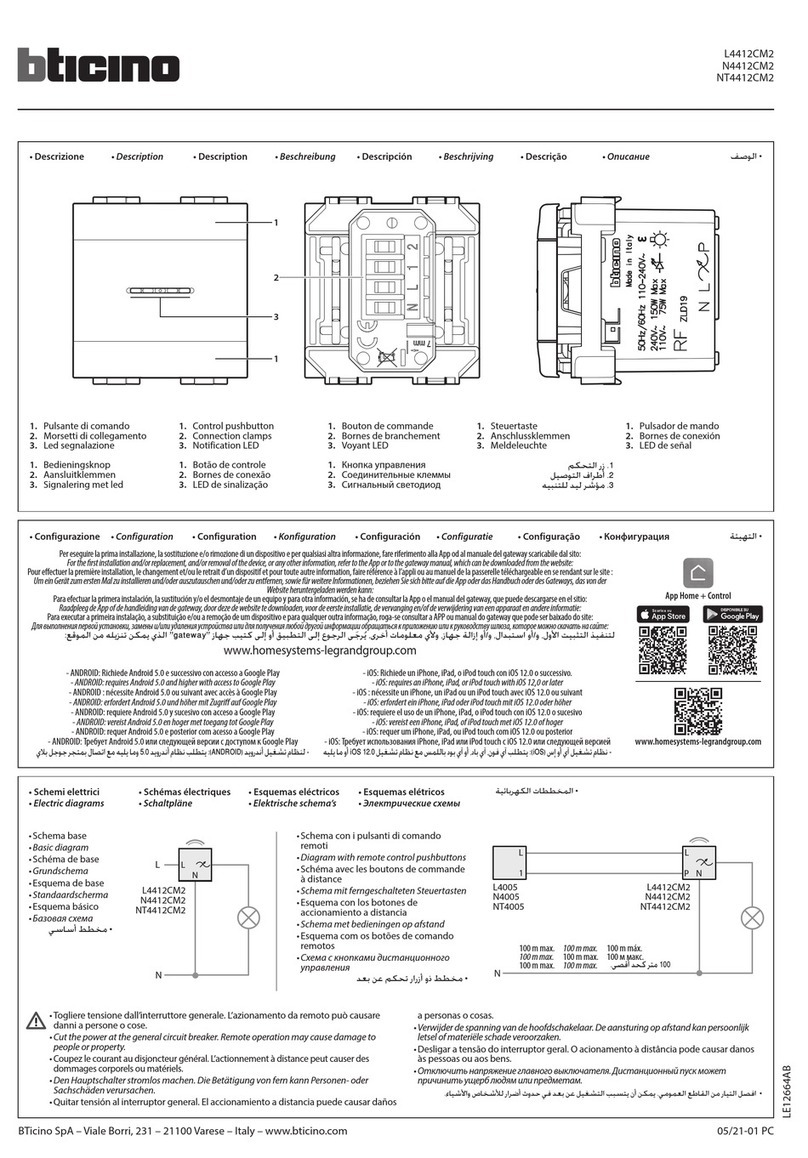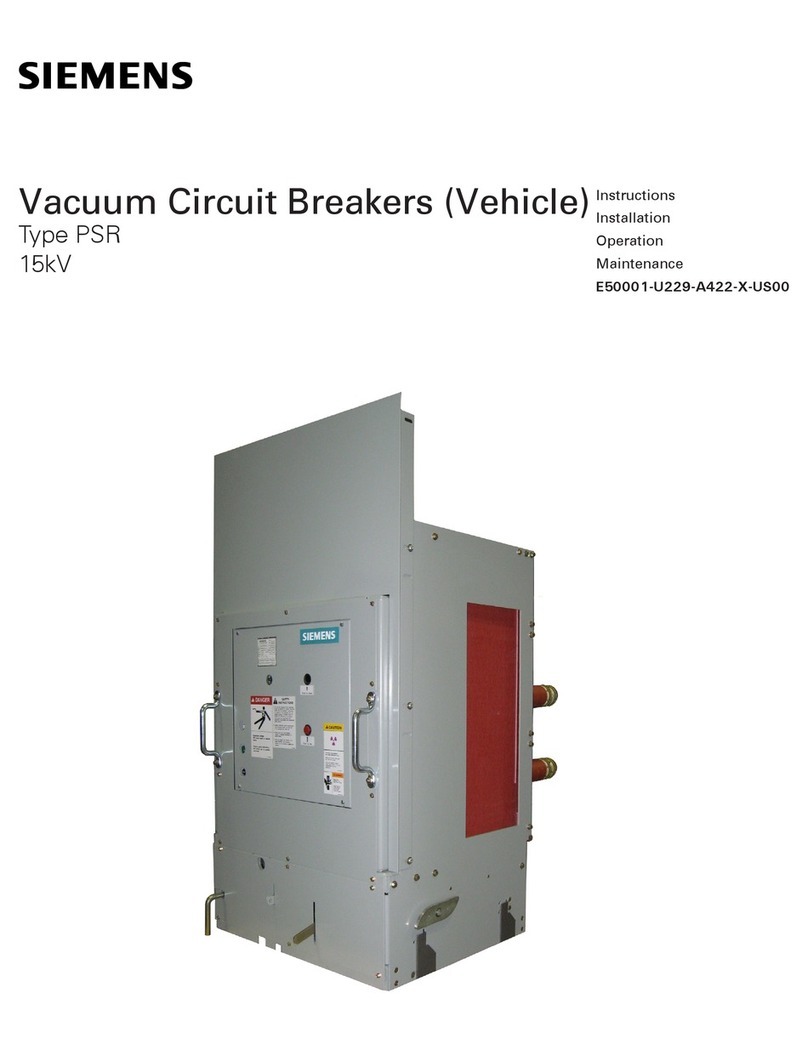ABB VHK-R Installation and operating instructions
Other ABB Circuit Breaker manuals

ABB
ABB SACE Emax 2 E2.2 User manual
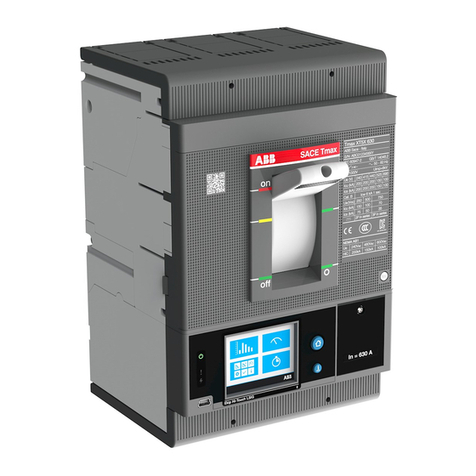
ABB
ABB SACE Tmax XT5 User manual
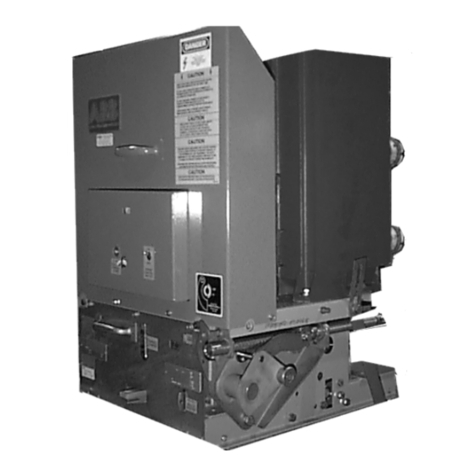
ABB
ABB VHK 20 Installation and operating instructions
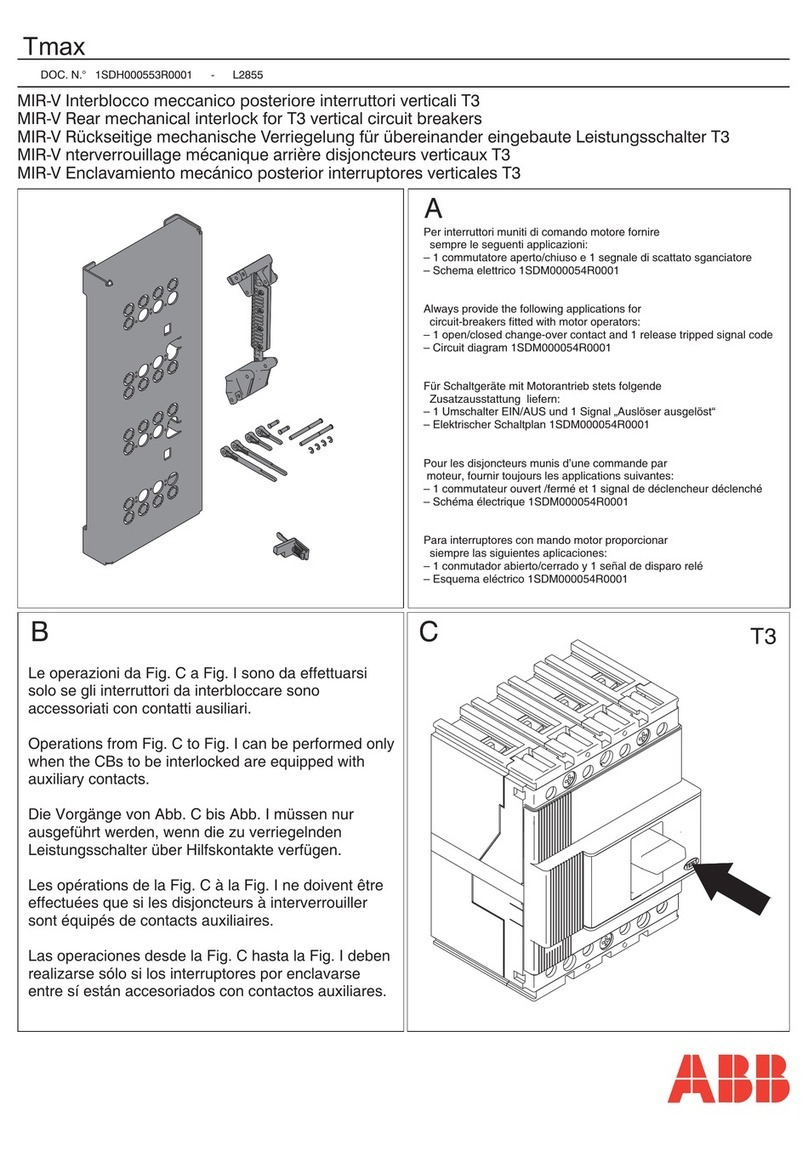
ABB
ABB Tmax MIR-V User manual
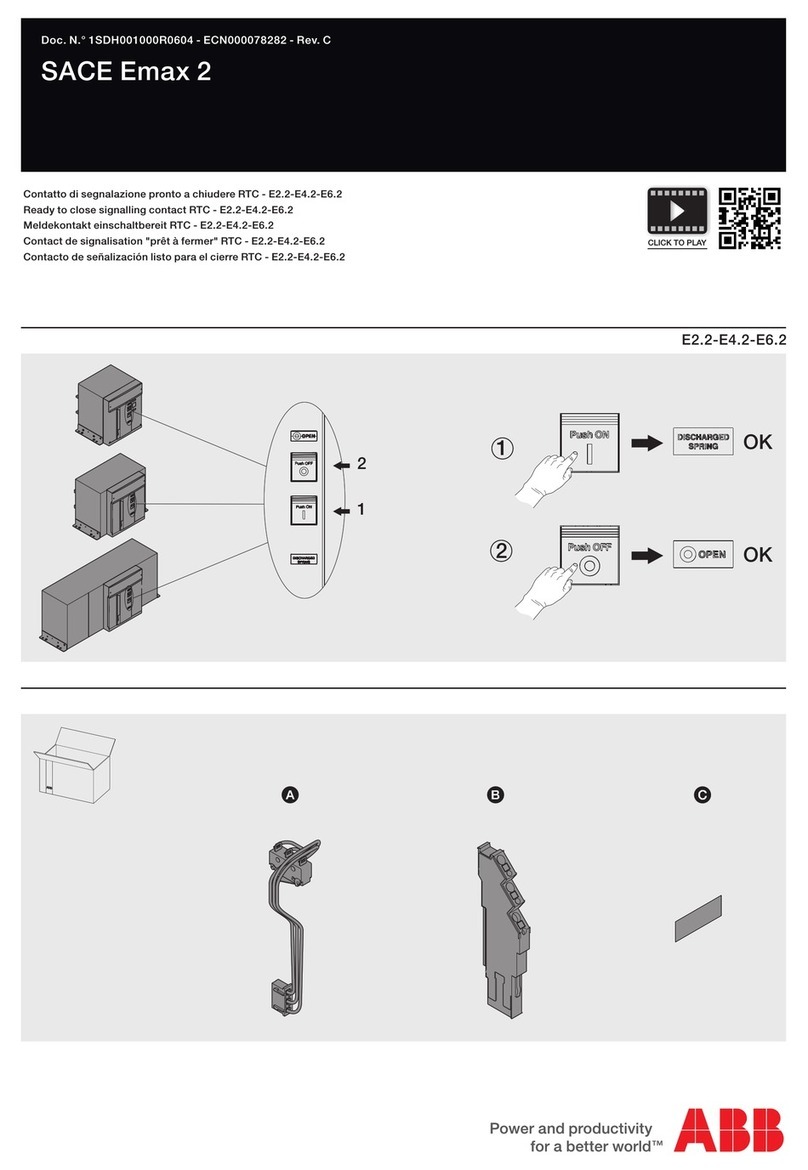
ABB
ABB SACE Emax 2 User manual

ABB
ABB SACE Emax 2 User manual
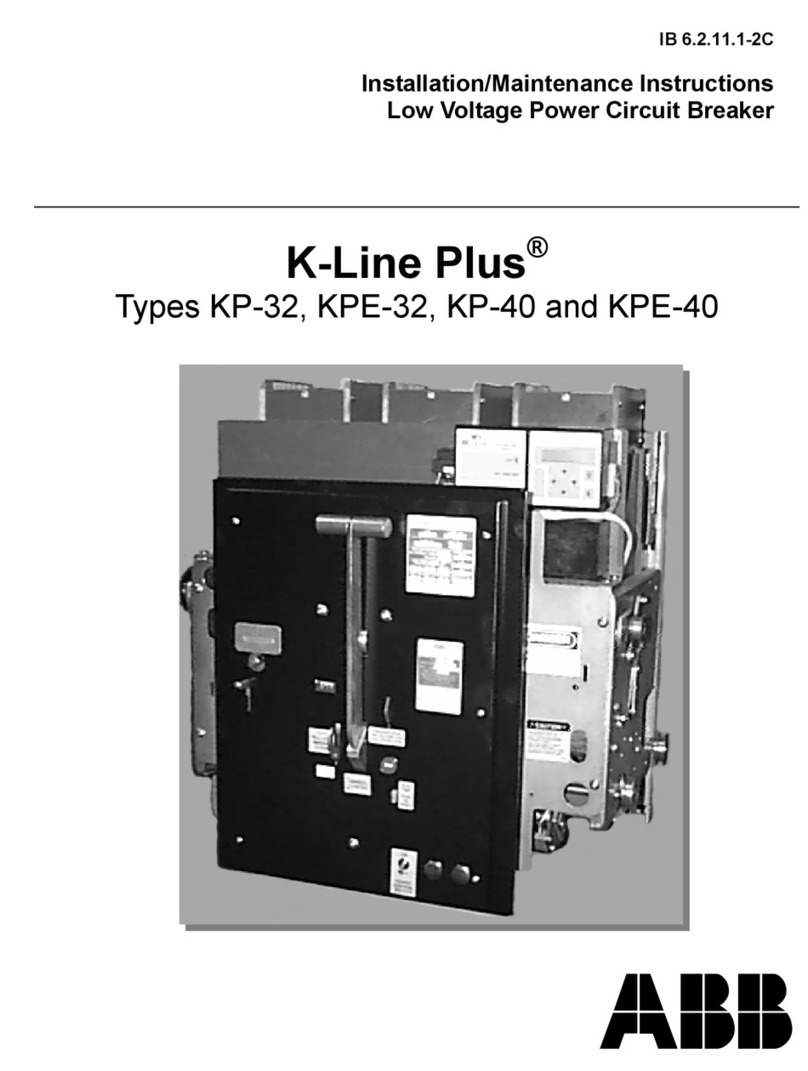
ABB
ABB K-Line Plus KP-32 Installation and operating instructions
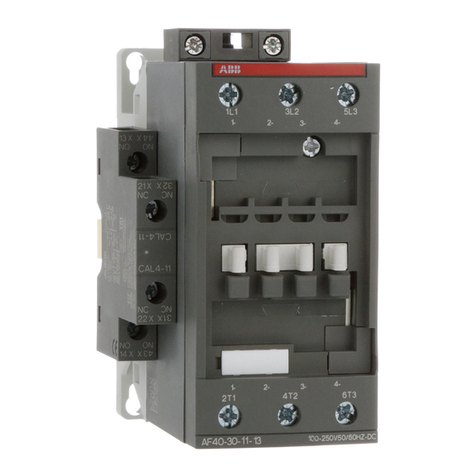
ABB
ABB AF40 User manual
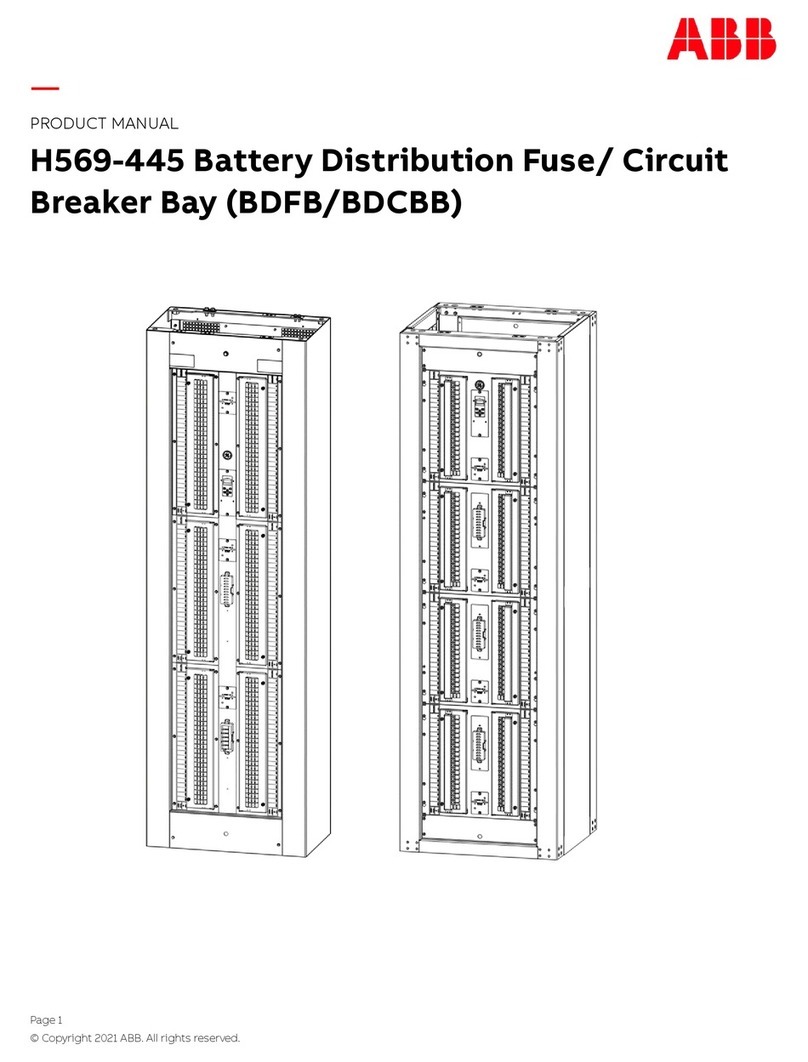
ABB
ABB H569-445 User manual
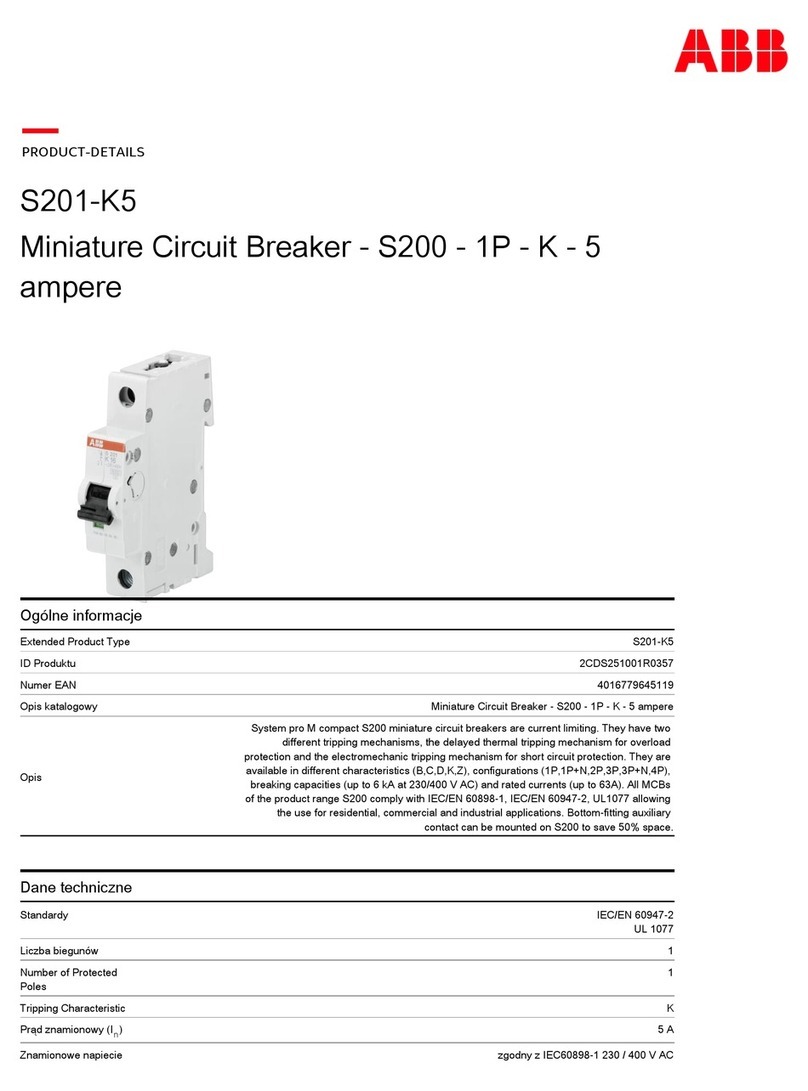
ABB
ABB S201-K5 User manual
Popular Circuit Breaker manuals by other brands

Siemens
Siemens 3VT9524-4TG30 quick start guide

Acrel
Acrel ASCB1 Series Installation and operation manual

Eaton
Eaton NOVA LBS 15 Installation and operation instructions

Siemens
Siemens SIRIUS 3RV1742 Original operating instructions

WEG
WEG FHU ACW125 installation instructions

TERASAKI
TERASAKI NHP TemBreak PRO P160 Series installation instructions
